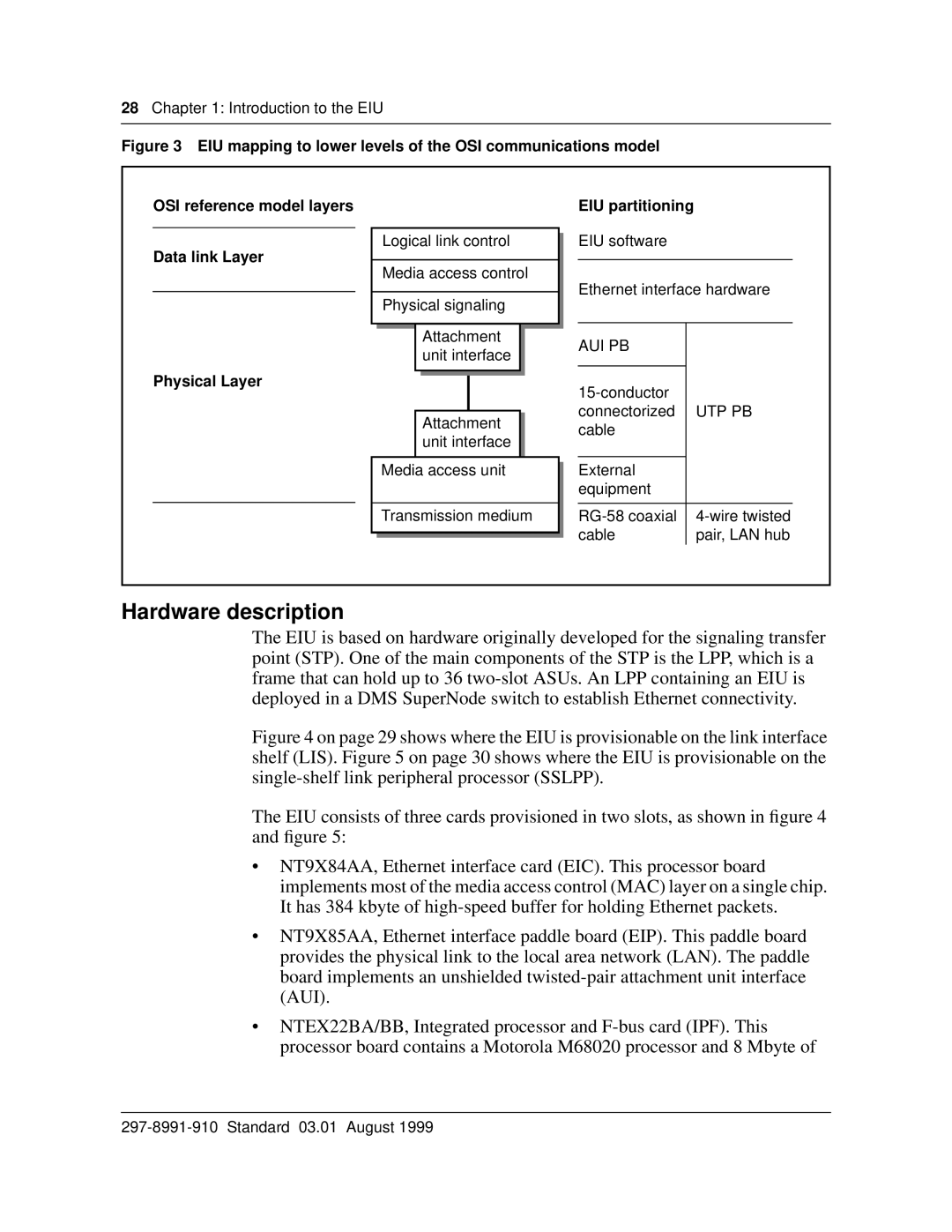
28Chapter 1: Introduction to the EIU
Figure 3 EIU mapping to lower levels of the OSI communications model
OSI reference model layers | EIU partitioning |
Data link Layer
Physical Layer
Logical link control
Media access control
Physical signaling
Attachment unit interface
Attachment unit interface
Media access unit
Transmission medium
EIU software
Ethernet interface hardware
AUI PB |
|
|
|
| |
connectorized | UTP PB |
cable |
|
|
|
External |
|
equipment |
|
|
|
cable | pair, LAN hub |
Hardware description
The EIU is based on hardware originally developed for the signaling transfer point (STP). One of the main components of the STP is the LPP, which is a frame that can hold up to 36
